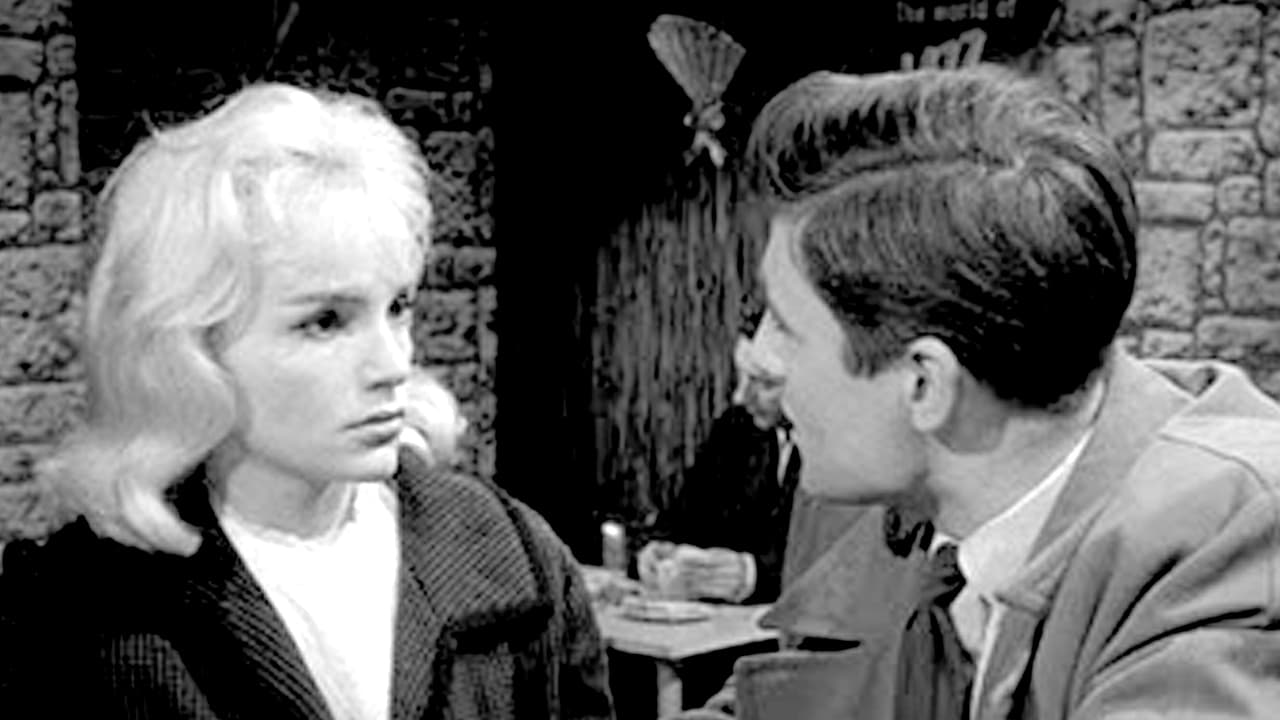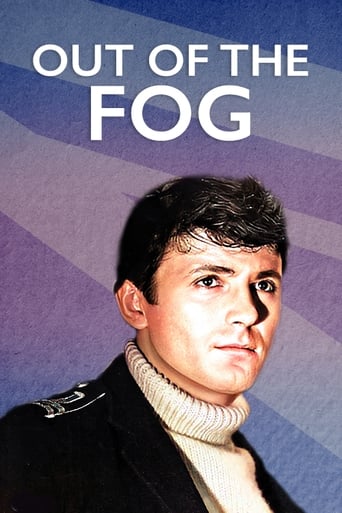


The basis of this film is fairly simple: a series of murders begins just as a man arrives in the area having been released from prison. Whilst perhaps not the most innovative of ideas there is certainly no shortage of potential from which to craft an intriguing and entertaining thriller. Unfortunately the film becomes something of a frustrating watch as it consistently fails to make the most of its opportunities.The murders - well, there are only two, as it happens - take place in the fog on a patch of undeveloped land within the city on nights when there is a full moon, and the victims are young blonde women who get strangled. You would imagine that this would be fertile ground for a film director, and that such visual imagery would be ideal for audiences, but the events are only ever mentioned rather than portrayed, as is also the case with an attack on a third victim who manages to escape.In fact the majority of the film takes place indoors, probably the result of a lack of time and money, and so rather than being a creepy thriller, the film takes on the guise of a character piece centering around newly-released jailbird George Mallon. Mallon, with nowhere else to go, is given board by an altruistic old gentleman who is helping to rehabilitate ex-convicts and re-integrate them into society, consequently Mallon finds himself sharing digs with a host of other crooks. However, whereas they are a close-knit group, and not necessarily keen on the idea of reform, Mallon rebuffs all opportunities to join their coterie, keeping himself very much to himself. In the aftermath of the first murder, however, the police learn that he was at the scene around about the time of the offence, and so becomes a suspect, and as their enquiries - and more attacks on women - continue, nothing arises which comprehensively eliminates Mallon from the enquiry. Indeed, the circumstantial evidence grows, since a subsequent murder victim was seen arguing with him in a coffee bar shortly before she was killed.In a desperate bid to snare their man the police use an undercover WPC as bait, getting their prettiest blonde to ingratiate herself with Mallon. Sure enough, events contrive to have Mallon and the policewoman alone together on a foggy night under the full moon and the audience will soon find out whether or not Mallon really is the serial killer...The film's first mistake is that very few of the characters are likable. Mallon, presumably to convince the viewer that he is a credible suspect, is portrayed as harsh and abrasive throughout regardless of who he is interacting with, which hardly elicits any sympathy for his situation from the audience. He continually insists that people have no time for ex-cons, yet his attitude does him no favours. The other crooks sharing the house are more genial, but nevertheless all to a man they are taking advantage of their host's good nature whilst simultaneously plotting more crimes. As for the police, they are portrayed as bullies. Mallon is quite right in saying that the Sergeant shouldn't have gone through his room without a search warrant. Their skills in investigation and detection would appear to be decidedly limited. Not once is it questioned why a man with form for robbery should suddenly turn his hand to murder, nor why he should volunteer that he was at the scene of the crime when he had the option of an alibi. They give the victim who survives, useless though she is, the briefest of interrogations and don't even bother to get her to take them to the place of the attack so that they can look for clues, or to speak to her boyfriend who allegedly frightened the attacker off. Instead the Superintendent comes up with the ludicrous theory that the murders are taking place on nights where there is a full moon (he somehow knows there was a full moon on each date where an attack previously took place), as though a full moon can be seen in thick fog anyway. Why not just assume the attacker chose to work under the cover of fog?Only when Susan Travers enters the fray about halfway through the film as the policewoman asked to go undercover do we get a character we can warm to and although there is a suggestion that Mallon has a softer side which might show through, we never quite get to see it. There are hints at there being much more to him, in his meeting with his mother and his propensity to sketch women, but nothing is ever really developed, and the other characters are all rather one-dimensional, especially the policemen who are essentially just men doing their jobs rather than personalities in their own right. The film is rather dated in its style now, of course, with some hammy dialogue, exaggerated accents and some very intrusive incidental music. The saving grace is the cast, which contains a rich array of character actors, the majority of whom rise above the pervading flatness of the whole thing to deliver performances which are interesting to watch. The likes of George Woodbridge and James Hayter may only be confined to smallish parts, but they are somehow compelling all the same. A fairly short running time prevents the plot from ever dragging and so this title is entertaining even if it never hits the heights it should. But the 'ex-con released back into society' routine had already been done to much more exemplary effect in "Hell Drivers" a few years earlier, and sadly even the comedic "Carry On Screaming" had a better idea of how to draw suspense from women being stalked in foggy woodlands than this film does.
... View MoreHighlights are the girls, Mela White (pre-Bergerac) and Susan Travers, with their trashy look, high-pitched Cockney accents and bleached blonde hair. What a lovely time they're having, going to the movies or to the coffee-bar - an alternative to the pub that's open in the evening and provides endless cups of coffee, hits on the jukebox, and amusing beatniks. Our hero George the ex-con enjoys sketching the types (and he's not bad - I hope he gets that job at the commercial art studio). I also enjoyed the furniture shop that employs George and Susan T, the undercover cop. She takes her stand in front of a large ad for Ercol, and hipsters would simply adore that modernist sideboard.All this is a contrast to the ex-prisoners' hostel - a survival from the Edwardian era (only 50 years previously), with aspidistras everywhere and a lady in a flowery apron called Ma.George makes just one visit to his middle-class mother (we only get a glimpse of her house's plushy interior), but we learn enough to understand something of what made him rob shops instead of joining the army or studying law. Or perhaps he just prefers coffee-bar life with girls like Mela and Susan. I don't blame him.
... View MoreA nice little B picture from prolific thriller director Montgomery Tully. The plot is unusual enough to make this stand out and there are some great little moments portrayed very well despite what is obviously a low budget. Heck, even the fog is in short supply here, but OUT OF THE FOG still packs a punch as a murder mystery and has something to say at the same time.The plot sees the callow and unlikeable David Sumner being released from prison and going to live in a kind of halfway house populated by delightful old lags. Most of these ex-cons are made of great British character actors like Michael Ripper, George Woodbridge, and Richard Shaw. The jovial James Hayter is the nice chap who runs the place. However, this is just the background for the main plot, involving a serial killer with a penchant for strangling blondes.Sumner is the main suspect and OUT OF THE FOG follows the police's tailing and eventual attempts to apprehend him. Susan Travers has a fine role as the undercover policewoman used as bait. There's a wonderfully evocative ending and lots of good character work en route; nothing much feels out of place, and overall the film is a nice and tidy piece of work.
... View MoreUnder-rated, unpretentious B-movie that keeps you guessing till the end. David Sumner's 'surly' and unlikeable lead grows on you once you realise that he never lets up; and the ending doesn't let you down. An uncompromising gem. Made on the cheap, for sure - they even stint on the fog - and Montgomery Tully was a hit-and-miss director at best, but this film is about ten years ahead of its time and still has a kind of individualism that weathers the fifty-or-so years that have elapsed since then rather well. From prison to a halfway house to eventual employment to a tentative relationship with a woman who ditches our 'hero' as soon as she finds out about his criminal past ...and then a trap is set, for he is under constant suspicion. This is one of those stories where much of the 'important' stuff -the killings, the planning of a heist- happens off-screen. And it's all the better for it.
... View More